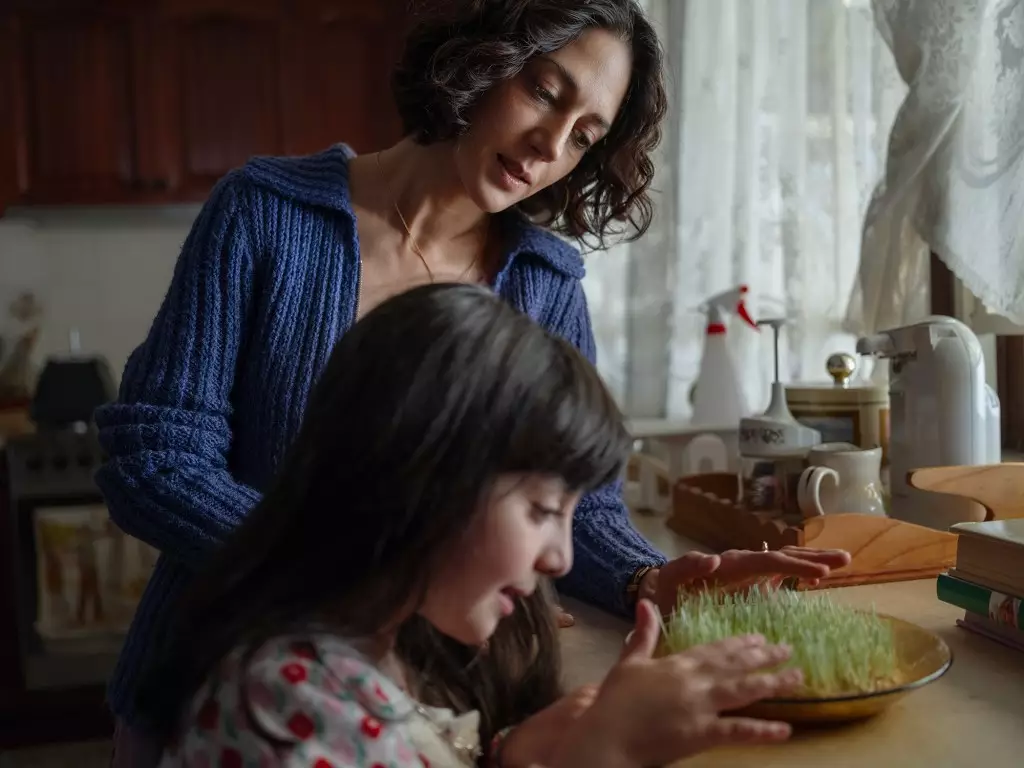Noora Niasari’s debut film, “Shayda,” delves into the complex world of women torn between tradition and modernity. The movie revolves around the life of the title character, Shayda, a divorced Iranian woman seeking refuge from her abusive ex-husband. The film’s opening sequence, set in 1995, sets the tone for the fear and uncertainty that plagues Shayda and her daughter, Mona. As they navigate the treacherous territory of an airport, Shayda and Vi, a social worker, emphasize the importance of identifying safety in the form of blue uniforms. These initial scenes showcase the vulnerability of the characters and lay the foundation for the challenges they face throughout the film.
From the outset, it becomes evident that Shayda takes great pride in her Persian heritage. Contrary to the expectations of the audience, Shayda’s story does not involve a flight towards secularism but rather a struggle to reconcile her cultural roots with the demands of modernity. Nowruz, the Iranian New Year, serves as the backdrop for the narrative, emphasizing the significance of tradition in Shayda’s life. The presence of Iranian language and scripture further reinforces her attachment to her heritage. Shayda’s dedication to preserving her cultural identity forms an essential part of the film’s exploration of the complexities of living between two worlds.
Within Iranian society, divorce carries significant weight and often faces resistance from family members. Shayda herself encounters disapproval, with her own mother suggesting that no one’s life is perfect and emphasizing the role of her ex-husband as a good father. This societal pressure adds to Shayda’s already immense struggle to establish a new life for herself and protect her daughter. The film subtly highlights the challenges faced by divorced women in Iranian culture, shedding light on the often-overlooked consequences of divorce on women’s lives within this context.
The clash between traditional Iranian values and Western influences forms a crucial aspect of the narrative. Hossein, Shayda’s ex-husband, belittles her as a “western girl” despite her Arab-Australian identity. This clash of cultures creates tension, as Shayda’s independence and desire for personal growth are met with Hossein’s narrow-minded perspective. The film critiques the notion that appearances alone determine one’s identity while emphasizing the damaging impact of oppressive cultural norms on women.
Throughout the film, Niasari incorporates nuanced glimpses into the lives of other women who pass through the women’s shelter. By doing so, the director sheds light on the broader issue of domestic abuse and the resiliency of those impacted by it. Shayda’s story represents a fraction of the larger narrative surrounding women who find themselves caught in cycles of abuse. Vi, the social worker, emerges as a quietly heroic figure, providing support and holding shattered lives together. The film’s portrayal of the struggles faced by these women conveys a message of hope and resilience, suggesting that renewal and growth are always possible, even in the face of adversity.
As the plot unfolds, the tension rises when Hossein follows Shayda and captures incriminating photographs in an attempt to prove her infidelity. The film takes a dramatic turn, highlighting the immediate and tangible dangers faced by Shayda. Niasari masterfully transitions from exploring the intangible psychological violence Shayda endures to portraying the brutality that she is now confronted with. This climax holds a mirror up to the harsh realities of domestic abuse, transcending the confines of fiction to depict a disturbing reality faced by many.
Throughout the film, the passage of time is symbolized by a bowl of sprouting lentils that Shayda keeps near her kitchen sink. This subtle motif serves as a reminder of the possibility of renewal and growth, despite the challenges faced. Niasari offers audiences a nuanced portrayal of the struggles, resilience, and ultimate transformation experienced by women caught between tradition and modernity.
“Shayda” serves as a poignant exploration of the complexities faced by women torn between tradition and modernity. Noora Niasari weaves a tale that captures the essence of these struggles through the deeply personal journey of Shayda. The film masterfully delves into the clash of identities, societal pressures, and resilience of women in the face of adversity. By shining a light on the challenges faced by these women, Niasari invites audiences to reflect upon the broader issue of domestic abuse and the need for societal change.

Leave a Reply